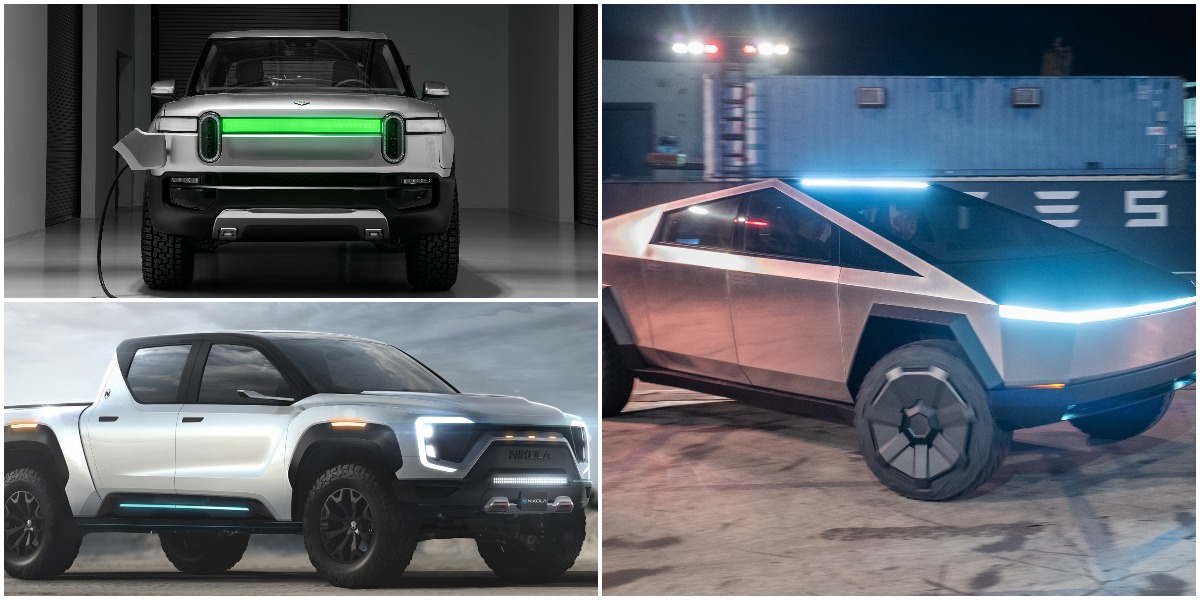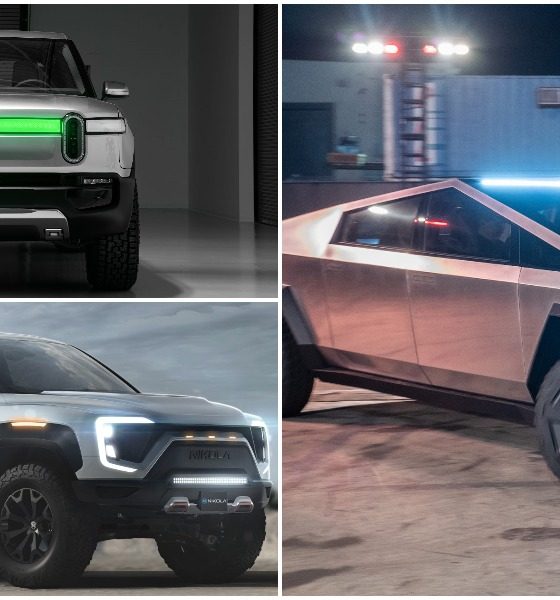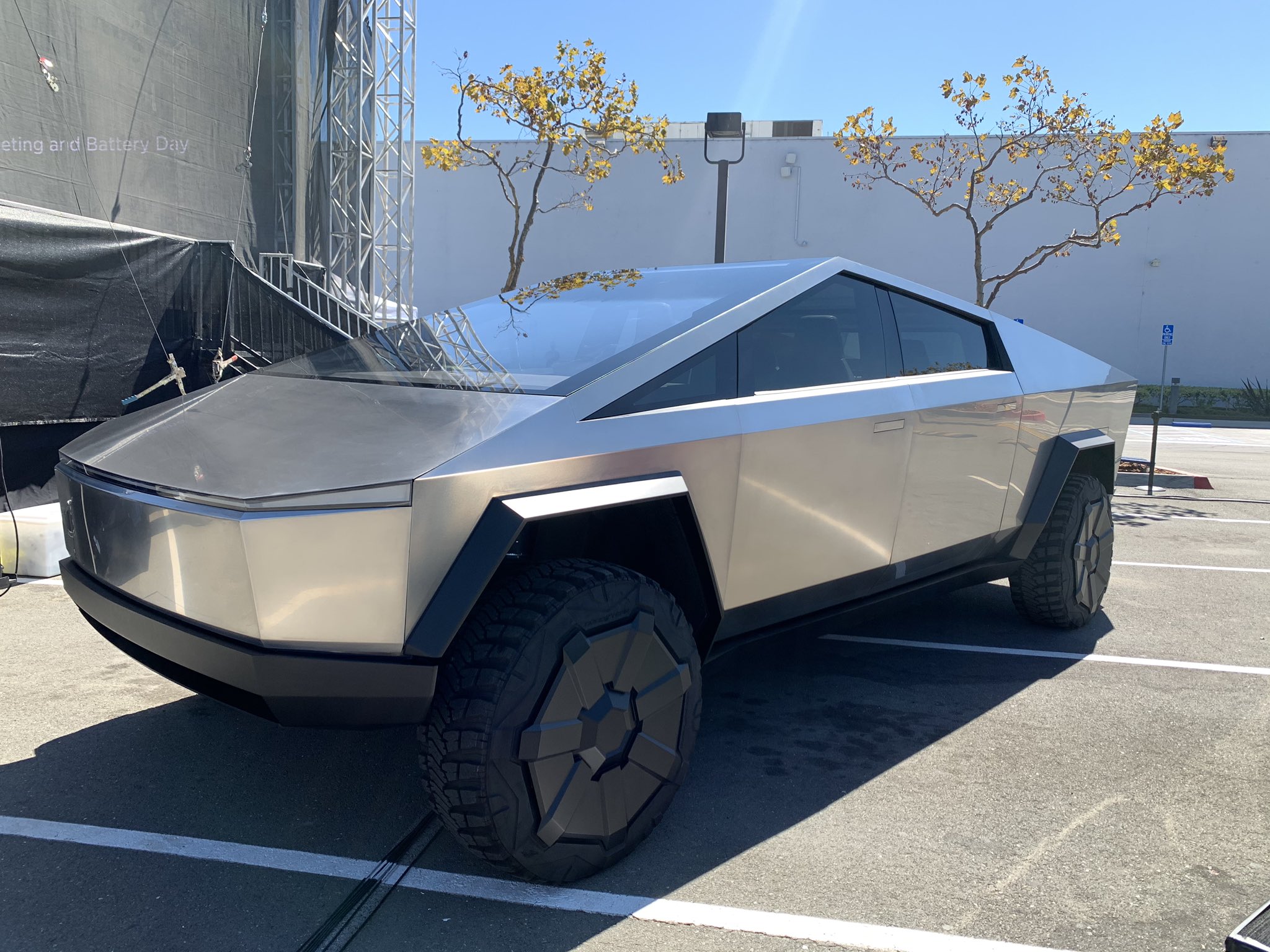

News
Can electric trucks breakthrough gas and diesel pickup loyalty?
Electric trucks haven’t yet made their way to the market, but plenty of them are announced. The big question is: Will EV trucks ever see the success that sedans and crossovers have? Can they be more popular than the gas and diesel trucks that are widely utilized across the world?
Pickup trucks are popular outside of the United States. In Canada, China, and even Australia, pickups are used by everyone from construction use to daily drivers. Their versatility as a luxury vehicle or a way to move large objects from one location to another makes them one of the more feasible types of vehicles available to consumers. For years, trucks have been listed as powerful, sturdy, and capable machines that have loyal consumer bases because of their adequacy for a wide range of activities.
But with the ongoing transition away from gas powertrains and toward electrification, trucks are simply next on the list to receive battery-powered operation. With several manufacturers releasing designs, pricing, and other variables for electric trucks, the question remains of whether or not the EV truck segment as a whole will be able to make a dent in the popularity of petrol-powered trucks in the future.
There seem to be several boundaries that EV trucks need to cross into to gain the trust and secure a sale to a driver who is interested in a truck but has their mind set on gas or diesel powertrains. I believe that one is going to be proving effectiveness in “work” settings like towing, off-roading, and hauling. The other is breaking through the brand loyalty that many truck buyers have with a certain manufacturer. Interestingly, it is tough to determine which will be harder for an EV truck maker to break, but it will likely be switching an owner away from their usual manufacturer.
Truck owners seem to hold a loyalty to their favorite manufacturer that is unmatched by owners of other segments. All too often, especially in my neck of the woods, I see and hear truck owners talking about why their manufacturer is the best, why others cannot seem to compare, and why they’ll never buy another brand of truck. Sometimes, you’ll even see the infamous bumper sticker of a kid peeing on a rival truck maker’s logo.
This is a preview from our weekly newsletter. Each week I go ‘Beyond the News’ and handcraft a special edition that includes my thoughts on the biggest stories, why it matters, and how it could impact the future.
But breaking a consumer away from a brand that they have put many years, and many dollars, into owning a certain vehicle is arguably one of the most difficult parts of selling cars. Past the production issues, which have plagued many car companies, Tesla included, for years, growing a brand is difficult. To have a consumer willingly switch brands is a tough task, and it usually relies on that company providing a massive shortcoming to that consumer in particular.
For example, bad customer service, poor quality, or even a political stance can cause a consumer to switch sides and consider other options. But these things are rare occurrences, so to really convince someone to try a different brand without any negative experiences really requires a product that makes someone go, “Wow, I need that.”
Credit: @KimPaquette | Twitter
Electric trucks certainly have the pizzazz and the appeal to make this happen. I would argue that the Cybertruck is probably the truck that will most likely drive more people to switch from gas or diesel-powered machines to electric ones. Simply because the design is so unique, many people may just be looking for something new that looks “tough” and “durable.” The Cybertruck certainly fits that bill.
However, the Rivian R1T has it’s own advantages too. Because of the fact that it has more of a “traditional” truck look, which is exactly what Tesla and Elon Musk were looking to avoid, it may be more fitting for many recurring truck buyers. It has the durability; it has the look, it has the options. It also is around the same price as many other trucks on the market, so the “too expensive” argument goes out of the window for those that still use it.
The next real test is proving durability and effectiveness. We have seen the Cybertruck pull the F-150 in a tug of war, but people still may be looking to see the vehicle perform normal everyday work. Same with the R1T.
The typical truck buyer is likely hauling things as small as 2x4s or as large as a boat. Before religious pickup buyers truly accept EV trucks, the manufacturers will have to prove that their products are capable of hauling normal, everyday things and large and difficult items. Performance and overall use capabilities will be proven before any truck buyers consider an electric option.
Please e-mail or tweet your thoughts about this subject. I am certainly interested in hearing what you all have to say about trucks and how EV makers can start making a dent in gas-powered pickup sales once deliveries begin. I think it will take more than a new, fresh, and fun way to drive a car to swing consumers to the “other side,” unlike it was with the sedan segment. Sedans are sedans, and they’re all pretty similar. I don’t believe there is as much brand loyalty on that side of things, but I could be wrong.
A big thanks to our long-time supporters and new subscribers! Thank you.
I use this newsletter to share my thoughts on what is going on in the Tesla world. If you want to talk to me directly, you can email me or reach me on Twitter. I don’t bite, be sure to reach out!

Elon Musk
Elon Musk’s X will start using a Tesla-like software update strategy
The initiative seems designed to accelerate updates to the social media platform, while maintaining maximum transparency.

Elon Musk’s social media platform X will adopt a Tesla-esque approach to software updates for its algorithm.
The initiative seems designed to accelerate updates to the social media platform, while maintaining maximum transparency.
X’s updates to its updates
As per Musk in a post on X, the social media company will be making a new algorithm to determine what organic and advertising posts are recommended to users. These updates would then be repeated every four weeks.
“We will make the new 𝕏 algorithm, including all code used to determine what organic and advertising posts are recommended to users, open source in 7 days. This will be repeated every 4 weeks, with comprehensive developer notes, to help you understand what changed,” Musk wrote in his post.
The initiative somewhat mirrors Tesla’s over-the-air update model, where vehicle software is regularly refined and pushed to users with detailed release notes. This should allow users to better understand the details of X’s every update and foster a healthy feedback loop for the social media platform.
xAI and X
X, formerly Twitter, has been acquired by Elon Musk’s artificial intelligence startup, xAI last year. Since then, xAI has seen a rapid rise in valuation. Following the company’s the company’s upsized $20 billion Series E funding round, estimates now suggest that xAI is worth tens about $230 to $235 billion. That’s several times larger than Tesla when Elon Musk received his controversial 2018 CEO Performance Award.
As per xAI, the Series E funding round attracted a diverse group of investors, including Valor Equity Partners, Stepstone Group, Fidelity Management & Research Company, Qatar Investment Authority, MGX, and Baron Capital Group, among others. Strategic partners NVIDIA and Cisco Investments also continued support for building the world’s largest GPU clusters.
News
Tesla FSD Supervised wins MotorTrend’s Best Driver Assistance Award
The decision marks a notable reversal for the publication from prior years, with judges citing major real-world improvements that pushed Tesla’s latest FSD software ahead of every competing ADAS system.

Tesla’s Full Self-Driving (Supervised) system has been named the best driver-assistance technology on the market, earning top honors at the 2026 MotorTrend Best Tech Awards.
The decision marks a notable reversal for the publication from prior years, with judges citing major real-world improvements that pushed Tesla’s latest FSD software ahead of every competing ADAS system. And it wasn’t even close.
MotorTrend reverses course
MotorTrend awarded Tesla FSD (Supervised) its 2026 Best Tech Driver Assistance title after extensive testing of the latest v14 software. The publication acknowledged that it had previously criticized earlier versions of FSD for erratic behavior and near-miss incidents, ultimately favoring rivals such as GM’s Super Cruise in earlier evaluations.
According to MotorTrend, the newest iteration of FSD resolved many of those shortcomings. Testers said v14 showed far smoother behavior in complex urban scenarios, including unprotected left turns, traffic circles, emergency vehicles, and dense city streets. While the system still requires constant driver supervision, judges concluded that no other advanced driver-assistance system currently matches its breadth of capability.
Unlike rival systems that rely on combinations of cameras, radar, lidar, and mapped highways, Tesla’s FSD operates using a camera-only approach and is capable of driving on city streets, rural roads, and freeways. MotorTrend stated that pure utility, the ability to handle nearly all road types, ultimately separated FSD from competitors like Ford BlueCruise, GM Super Cruise, and BMW’s Highway Assistant.
High cost and high capability
MotorTrend also addressed FSD’s pricing, which remains significantly higher than rival systems. Tesla currently charges $8,000 for a one-time purchase or $99 per month for a subscription, compared with far lower upfront and subscription costs from other automakers. The publication noted that the premium is justified given FSD’s unmatched scope and continuous software evolution.
Safety remained a central focus of the evaluation. While testers reported collision-free operation over thousands of miles, they noted ongoing concerns around FSD’s configurable driving modes, including options that allow aggressive driving and speeds beyond posted limits. MotorTrend emphasized that, like all Level 2 systems, FSD still depends on a fully attentive human driver at all times.
Despite those caveats, the publication concluded that Tesla’s rapid software progress fundamentally reshaped the competitive landscape. For drivers seeking the most capable hands-on driver-assistance system available today, MotorTrend concluded Tesla FSD (Supervised) now stands alone at the top.
News
Elon Musk’s Grokipedia surges to 5.6M articles, almost 79% of English Wikipedia
The explosive growth marks a major milestone for the AI-powered online encyclopedia, which was launched by Elon Musk’s xAI just months ago.

Elon Musk’s Grokipedia has grown to an impressive 5,615,201 articles as of today, closing in on 79% of the English Wikipedia’s current total of 7,119,376 articles.
The explosive growth marks a major milestone for the AI-powered online encyclopedia, which was launched by Elon Musk’s xAI just months ago. Needless to say, it would only be a matter of time before Grokipedia exceeds English Wikipedia in sheer volume.
Grokipedia’s rapid growth
xAI’s vision for Grokipedia emphasizes neutrality, while Grok’s reasoning capabilities allow for fast drafting and fact-checking. When Elon Musk announced the initiative in late September 2025, he noted that Grokipedia would be an improvement to Wikipedia because it would be designed to avoid bias.
At the time, Musk noted that Grokipedia “is a necessary step towards the xAI goal of understanding the Universe.”
Grokipedia was launched in late October, and while xAI was careful to list it only as Version 0.1 at the time, the online encyclopedia immediately earned praise. Wikipedia co-founder Larry Sanger highlighted the project’s innovative approach, noting how it leverages AI to fill knowledge gaps and enable rapid updates. Netizens also observed how Grokipedia tends to present articles in a more objective manner compared to Wikipedia, which is edited by humans.
Elon Musk’s ambitious plans
With 5,615,201 total articles, Grokipedia has now grown to almost 79% of English Wikipedia’s article base. This is incredibly quick, though Grokipedia remains text-only for now. xAI, for its part, has now updated the online encyclopedia’s iteration to v0.2.
Elon Musk has shared bold ideas for Grokipedia, including sending a record of the entire knowledge base to space as part of xAI’s mission to preserve and expand human understanding. At some point, Musk stated that Grokipedia will be renamed to Encyclopedia Galactica, and it will be sent to the cosmos.
“When Grokipedia is good enough (long way to go), we will change the name to Encyclopedia Galactica. It will be an open source distillation of all knowledge, including audio, images and video. Join xAI to help build the sci-fi version of the Library of Alexandria!” Musk wrote, adding in a later post that “Copies will be etched in stone and sent to the Moon, Mars and beyond. This time, it will not be lost.”








